

On April 10, 2025, Vesper Energy held a ribbon cutting ceremony to celebrate the official commercial operation of its flagship energy project Hornet Solar. The project is now fully operational. This ribbon cutting ceremony is not only of great significance to Vesper Energy, but also marks the elevation of Texas' position as a leader in solar energy production in the United States. The Hornet Solar project is located in Sweezh County, Texas, covering an area of over six square miles and containing over 1.36 million modules, making it one of the largest solar projects in the United States. The project will bring over $100 million in new tax revenue to Sweezh County and provide 600 megawatts of AC power. The Hornet Solar project demonstrates how large-scale energy projects can provide reliable household electricity for American households and businesses Juan Suarez, Co CEO of Vesper Energy, stated. This project not only involves solar panels, but is also committed to reducing energy costs while strengthening our country's energy security. With Hornet Solar fully operational, we are helping a community use self-produced electricity to ensure that businesses and communities have the energy they need for development and growth Vesper Energy began construction of Hornet Solar in the fall of 2023 and announced in January 2024 that it had secured $590 million in financing to further advance the project. Since its establishment, Hornet Solar has achieved multiple important milestones, including the installation of the one millionth solar panel in December 2024 and the installation of the last module in January 2025. The scale of Hornet Solar is self-evident -1.36 million solar panels, over six square miles (approximately 10 square kilometers), with a total installed capacity of 600 megawatts. But the real impact lies in the benefits that the project brings to Swisher County: over $100 million in new tax revenue, as well as significant investments in schools, infrastructure, and healthcare EPC Vice President Zach Wald said. Hornet Solar has brought significant economic benefits to Swisher County and its surrounding areas. The project has created over 300 job opportunities during construction and will contribute new tax revenue to basic public services, including $61 million for the Tulia Independent School District, $25 million for the county government, and $12 million for the Swisher Memorial Hospital District.
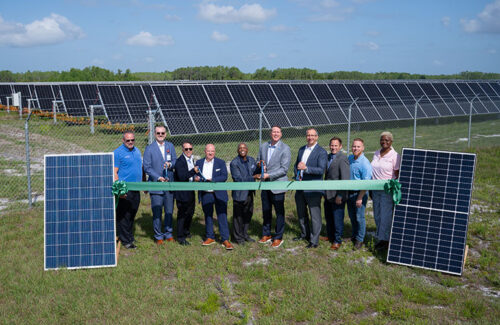
The Florida municipal utility company OUC recently celebrated the grand opening of its largest solar center in history. The project is located east of Saint Cloud, covering an area of over 600 acres with a total installed capacity of 149 megawatts, which will more than double OUC's existing solar installed capacity. The addition of Harmony II and Storey Bend solar centers brings the total capacity of the OUC solar energy combination to 271.5 megawatts - generating enough solar energy to power 50000 typical OUC households. On April 10th, leaders from OUC, AdventHealth, and Comcast NBCUniversal gathered in Osiola County to unveil Harmony II and Storey Bend Solar Center. These two companies have signed contracts as major tenants, leasing a significant portion of the electricity from each solar center through OUC's SunChoice community solar project. The SunChoice project enables commercial and residential customers to support solar energy while offsetting all or part of their electricity consumption. Customers do not need to install or maintain infrastructure themselves to achieve their sustainable development goals. At OUC, we believe that renewable energy is not only a pathway to clean energy, but also a part of the future business development of Central Florida, "said Clint Bullock, OUC General Manager and CEO. With the official launch of these two solar centers, OUC's solar power generation capacity will more than double and help our customers achieve their clean energy goals, while realizing our vision of becoming an innovative solution provider and preferred partner in Central Florida AdventHealth will offset 50% of its energy consumption within the OUC service area by subscribing to Harmony II solar centers. The parent company of Universal Studios destination and experience, Comcast NBCUniversal, will purchase and compensate 45% of the current operating energy consumption of Universal Studios Resort in Orlando by ordering the Storey Bend Solar Center. AdventHealth Orlando CEO Rob Deininger said, "By providing clean, renewable energy, we are committed to creating a healthier environment and improving the well-being of our service recipients through our commitment to holistic healthcare services. AdventHealth is committed to reducing its impact on the environment, which will help Central Florida residents feel healthy for generations to come
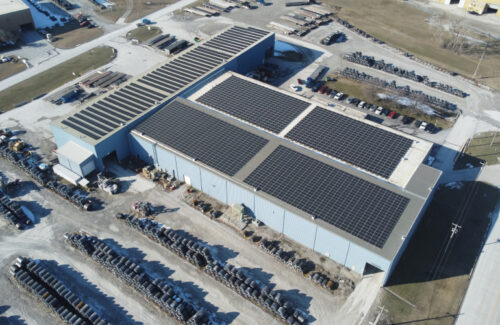
Artisun Solar recently completed two rooftop solar projects for Steel&Pipe Supply Co. in Cartusa, Oklahoma. These two rooftop projects are located on Fort Gibson Road and Bird Creek Avenue, with the former being 1.25 MW and the latter being 950 kW. This project represents an important step forward for renewable energy in Oklahoma, "said Kirk Kreisel, CEO of Artisun Solar. We are honored to collaborate with a forward thinking company like Steel&Pipe Supply. Together, we will showcase the economic and operational benefits of solar energy, while paving the way for future development in the region John Conley, Co President of Steel&Pipe Supply, said, "This project demonstrates our commitment to sustainable energy solutions and is a model for how companies in our industry can achieve long-term sustainable development goals while reducing operating costs. We look forward to future cooperation to drive positive environmental and economic impacts
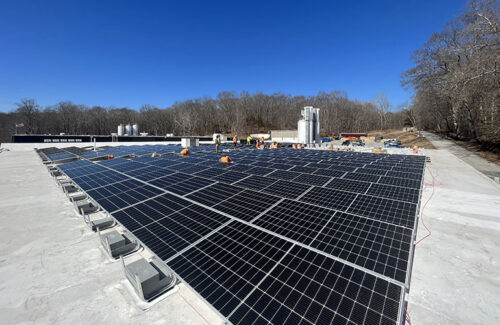
Budderfly, an energy as a service company, and Gilman Brothers Company, a 128 year old family foam panel manufacturer headquartered in Connecticut, announced a new 750 kW roof solar project. In the 15 year agreement, Budderfly is expected to reduce Gilman Brothers' annual energy costs by up to 30%. Gilman Brothers Company has been a fixed asset in the American manufacturing industry since 1897, with a long history of resilience and innovation. The company provides signage, display, graphic, and wall art solutions to some of the largest retailers in the United States, always adopting forward thinking innovative energy methods. This can be traced back to the 1920s, when the river that supplied power to the factories that provided it dried up. The founder of the company personally applied to establish Bozrah Light and Power Company, a utility company with decades of history that provides services to the Gilman Brothers factory and surrounding communities. Nowadays, Gilman Brothers is facing the challenge of breaking away from dependence on fossil fuels and outdated lighting, and shifting towards a more sustainable and cost-effective clean energy future. Budderfly's $1.5 million investment enables the company, which has 120 employees, to use solar energy to power its manufacturing operations. Budderfly's comprehensive service model enables Gilman Brothers to implement efficient upgrades, integrate renewable energy, and maintain its innovative tradition while striving to achieve ambitious net zero goals. The current energy challenge is not the first challenge our company faces. Gilman Brothers has long recognized that better control over our energy supply and transparency in how we use energy will bring operational and financial benefits. We also know that managing energy is a full-time job Jeff Blanchard, Vice President of Operations at Gilman Brothers, said. Budderfly's overall approach and financial model are exactly what independent manufacturers like Gilman Brothers want and need. With Budderfly, we can focus on our core mission of providing customers with high-quality products, while believing that our ever-changing energy needs will be met Through this project, Gilman Brothers will benefit from rooftop solar systems, new LED lighting, and ultra efficient HVAC systems, as well as several other cost saving technologies such as efficient motors paired with variable frequency drives.
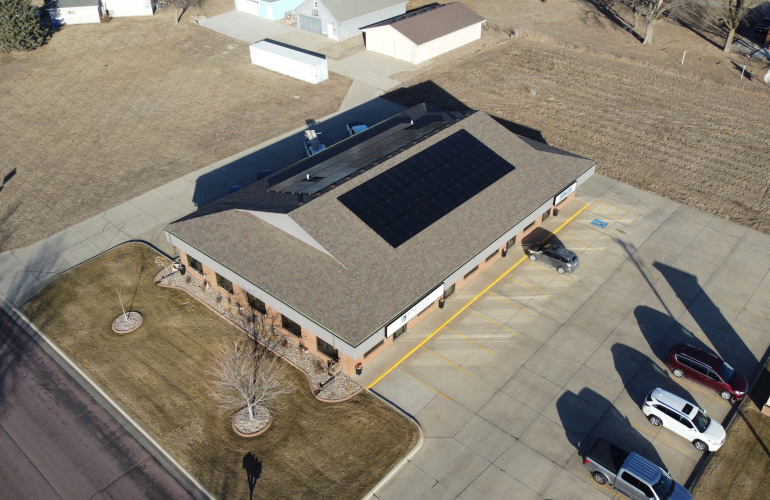
Artisun Solar has completed two solar energy systems for the Helluva Container located in Elk Point, South Dakota. Helluva Container has installed a new 36.9 kW DC photovoltaic system at its headquarters and an 85.5 kW DC system in its warehouse, further strengthening its commitment to sustainable operations. The company specializes in purchasing, refurbishing, and reselling second-hand Gaylord boxes and packaging materials, and has long been responsible for environmental protection. We are delighted to be the first enterprise in Elk Point to use solar energy - not only for our business, but also for the entire community, "said Emily Wells, Vice President of Container Operations at Hellova. By taking the first step, we have helped our city update its infrastructure to adapt to solar energy, making it easier for other businesses to emulate. This is not just about us - it's about setting new standards for sustainable development in Elk Point This is a critical moment for Elk Point, "said Kirk Kreisel, CEO of Artisun Solar. Helluva Container leads the trend, proving that businesses in South Dakota can take proactive measures to integrate solar energy and have a lasting impact. Their leadership will make it easier for others in the region to emulate their approach.
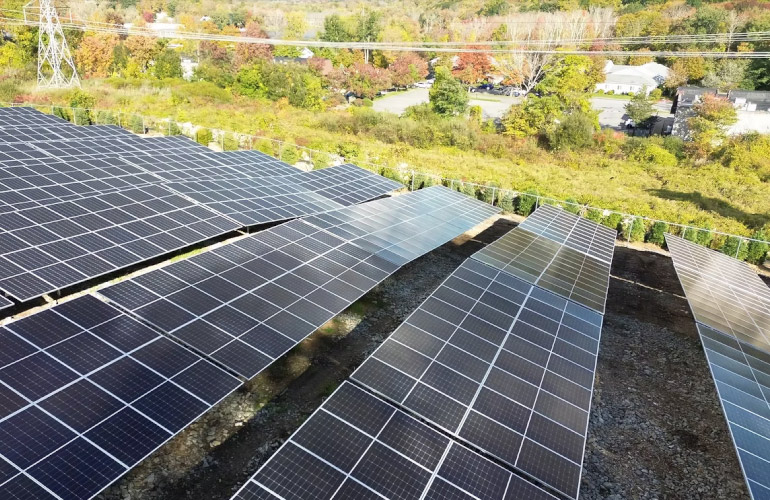
The Old Hill Farm solar project, developed by Woodfield Renewable Partners, has now been completed in Jefferson Valley, New York. This 6.1 MW project is built on steep and uneven terrain, requiring limited disturbance to the land. Woodfield turned to DCE Solar's large-span ground screw support system to complete this difficult project. Execution and design are equally important, and DCE Services assists in completing the installation. The company's precise pre drilling and mechanical installation expertise ensure that the shelving system is not only securely installed, but also seamlessly integrated with the natural contours of the site. DCE's large-span racks have changed the landscape of community solar facilities. Its sturdy design, coupled with the ability to cover a large area with minimal structural components, makes it the perfect solution for our project Tyler Bonini, Head of Woodfield Renewable Partners, LLC, said. The system is versatile, durable, and cost-effective, and is an important component of our successful project You can find more information about the project in the online case study.
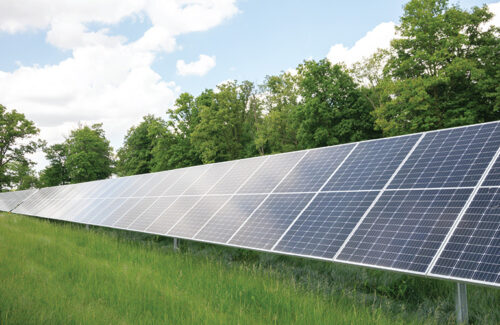
EDP Renewables North America (EDPR NA) launched a 100 MW Riverstart III solar park in Randolph County, Indiana today. Amazon has signed a long-term power purchase agreement to provide 100 megawatts of electricity for the third phase of the Riverstart solar park. This project is part of Amazon's climate commitment to achieve net zero carbon emissions for all of its operations by 2040, and is also part of the company's efforts to match 100% of the electricity used in its operations with renewable energy. The power generation of Riverstart III is equivalent to the electricity consumption of over 19200 households in Indiana. The economic growth during the project implementation period will benefit local initiatives such as schools, road maintenance, infrastructure, and other basic services. The project will pay approximately 32.8 million US dollars to local governments in the form of taxes. During the project implementation, approximately $2.9 million will be used for local restaurants, shops, gas stations, and other retailers. The construction of Riverstart III has created over 350 job opportunities and will continue to create multiple job opportunities during its operation. Landowners and farmers within the project scope will receive $28 million in land lease agreements, which will help maintain their land and alleviate financial burdens in the face of challenging markets and adverse weather conditions affecting the US agricultural sector. In order to fulfill its environmental responsibility, EDPR NA adopted pollinator friendly practices in the construction and maintenance of Riverstart III. Sandhya Ganapathy, CEO of EDP R NA, said, "With the launch of the new phase of Riverstart Solar's project, our investment portfolio in Indiana continues to grow, once again demonstrating the significant contribution of renewable energy and solar energy to meeting Indiana's growing energy needs." "As the largest renewable energy owner and operator in the state, we thank Randolph County for its continued partnership with us, focusing on providing economic and community benefits, and achieving a positive track record EDP R NA manages 11 phases of four renewable energy projects in Indiana, totaling 1.7 gigawatts. The project includes two phases of the 398 MW Headwaters wind farm, six phases of the 801 MW Meadow Lake wind farm, three phases of the 300 MW Riverstart solar park, and a 202 MW Sweet Acres wind farm.
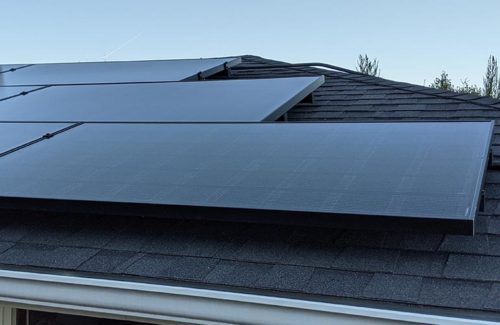
Scanifly is a solar design and on-site operation software that has integrated its services with Pegasus, a California based rooftop solar installation system supplier. The integration will automatically transfer Scanifly design data and panel positions directly to the Pegasus design tool, eliminating platform switching and repetitive work. Direct API integration connects Scanifly's design environment with Pegasus' shelf layout, bill of materials (BOM), and engineering document functions. Solar contractors can now select installation equipment and generate BOMs in a unified workflow. Scanifly CEO Jason Steinberg said, "A precise shelving system requires precise roof measurements, accurate panel placement, and actual on-site structural data. Scanifly's realistic design output based on drones has unique details that can provide this data. Pegasus is a pioneer in the creation and promotion of shelving solutions, and we are pleased to be able to achieve this goal at a faster pace from initial investigation to final installation This integration combines Scanifly's drone based 3D model with Pegasus' installation structure, including SkipHail, Rail System, and InstaTilt products. Contractors can specify InstaFlash2 and other waterproofing solutions based on the actual roof condition. Pegasus Sales Vice President Andrew Jones said, "This integration connects the two key parts of the process - accurate roof measurements and correct installation specifications - to ensure that the parts that appear correct in the design can function properly on the roof." Pegasus and Scanifly have many contractor relationships, especially with some of the industry's highest quality and most reputable companies, including SunnyMac, Freedom Solar, and Good Faith Energy. These contractors will truly benefit from this cutting-edge integration

In 2021, Canadian technology company Ubiquity Solar announced that it will establish a nearly 2 gigawatt solar cell manufacturing plant in New York to provide products for the aerospace and utility sectors. This effort was never realized, and now the manufacturing equipment is listed for sale by Tiger Group and GESemi. Artificial intelligence and semiconductor auction companies are accepting equipment quotations for the production of high-efficiency gallium arsenide (GaAs) thin-film photovoltaic cells. These fully retired production lines are ready to be shipped from New York. Nearly 600 Flat noodles include equipment from Aixtron Group, Attolight, GigaMat, SCHMID, Hercules and KLA Corp. Ubiquity acquired this equipment through the acquisition of Alta Devices, which was the first to launch GaAs thin-film solar cells for various applications such as satellites and automobiles. This set of equipment has never been used in New York and has been packed ever since. Kevin Shows, Chief Operating Officer of GESemi, said, "The advanced production line sold this time can be used to manufacture weight sensitive application products, such as drones that require efficient conversion of solar energy into electricity. In addition, this is an excellent technology for the space market Ubiquity's patents (partially acquired from Alta Devices) and other intellectual property assets related to high-tech manufacturing of gallium arsenide chips are also being sold. Chad Farrell, Managing Director of Tiger Commercial&Industrial, stated that Ubiquity Solar, with its photovoltaic technology products, is focused on providing the space market with higher power per square meter and better overall energy production performance than aerospace grade silicon. Its lightweight and efficient photovoltaic cells have high practicality, making the mechanical equipment, patents, and intellectual property sold this time particularly valuable to the industry
Categories
New Products
Tin Roof Rapid Solar Mounting System with Hanger Bolt Read More
Residential Small Solar Easy Bracket Kit for Home Balcony Read More
Automatic Single Pile Solar Tracker with 10 PV Panels Read More
Angle Adjustable Aluminum Easy Solar Panel Bracket for Garden Read More
Intelligent Single Post Dual Row Solar Tracking System Read More
5000ES Solar Off-Grid Energy Storage Inverter Supplier Read More
Multi Drive Double-Sided Single Axis Tracker System Read More
© Copyright: 2025 Xiamen Wintop New Energy Tech Co., Ltd.. All Rights Reserved.

IPv6 network supported